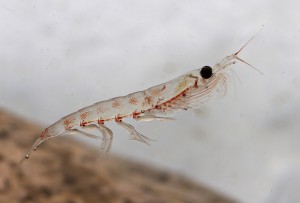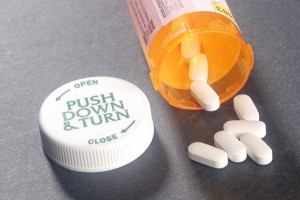Omega-3 fatty acids have gotten a lot of limelight in the press; krill oil was kept more in the background by the media. But both omega-3 and krill oil are important for your health.
What can confuse you is the following paragraph that I picked up from Facebook:
“I cannot believe that in the last 7 days 3 Doctors have asked me what krill omega-3 is. One would think that those who look after our health would realize that the high levels of mercury in the regular omega-3 has reached dangerous levels. Krill oil is harvested from pristine waters of the Antarctic Ocean and tested to be free from harmful levels of mercury. If you have not heard of it, it is for brain, heart, joint and immune health.”
Clarification of what Omega-3 fatty acids are
Depending on where fish is within the ocean’s pecking order of feeding, the levels of mercury of the fish oil that contains omega-3 fatty acids will be higher or lower. Tuna, for instance is one of the predator fish on top of the line. They are large predator fish, and as a result, not a fish you want to eat as it has very high levels of mercury. Salmon on the other hand is lower in the line of predator fish. That’s why it is still recommended to eat salmon two or three times per week. Fish oil is pooled from various fish and then molecularly filtered through a special filter that removes heavy metals like mercury, cadmium and others. Knowing these facts, the Facebook text above may be accurate in stating, “regular omega 3 has reached dangerous levels”, but it is inaccurate for the molecularly filtered omega-3 fish oil, which is the only one I would recommend as a supplement. Having said that there are still significant differences in quality according to a report online that tested 51 common products in the US. The omega-3 fatty acids EPA and DHA are stored in the membranes of platelets and in circulating plasma triglycerides, which is useful for the functioning of the lining of our arteries. This is called endothelium and needs to be healthy to lower blood pressure and prevent hardening of the arteries. Omega-3-fatty acids support the cardiovascular system foremost and the brain secondarily.
Where does Krill oil come from?
Krill oil comes from tiny crustaceans called krill that provides additional benefits that are not found in fish oil alone. Although the initial concentration of raw krill oil has less mercury per milliliter than omega-3 fatty acid fish oil, it still needs to be molecularly filtered to remove heavy metals. Also bear in mind, that the tiny crustaceans live in the same polluted ocean waters as other fish. It is a sad fact that our oceans are no longer pristine! The same is true for the Antarctic Ocean. After the filtering process both krill oil and omega-3 fatty acid fish oil are equal in their quality (free of mercury, other heavy metals, PCB and dioxins).
The omega-3 fatty acids of krill oil have an affinity to bind with phospholipids in red blood cells. This enables krill oil to cross the blood-brain barrier and get into the brain cells providing support for the brain. In this respect krill oil has an edge over omega-3 fatty acids to support the brain. But secondarily it is also good for your heart and the lining of the arteries.
Benefits of marine oils like krill and fish oil
It is best to think about krill oil and omega-3 fatty acids (fish oil) as complementary marine oils that have multiple beneficial effects on the body.
Studies have shown that arthritis and osteoarthritis are helped by krill oil, but also by fish oil. Similarly, heart attacks and strokes are prevented with both krill oil and omega-3 fatty acids. It appears that both oils reduce inflammation in the arteries that are associated with high blood pressure, diabetes, obesity and the metabolic syndrome in obese people. C-reactive protein measuring inflammation was reduced by krill oil up to 30% compared to placebo within 30 days. Patients with arthritis had 20% and more reduction in stiffness and pain.
Krill oil is well absorbed into the brain and can prevent age-related brain shrinkage, preserve cognitive function and memory, prevent dementia and also possibly depression.
Other health conditions improve on both krill oil and omega-3 fatty acids like osteoporosis (in combination with vitamin K2, vitamin D3 and calcium), a weak immune system, diabetes, high triglyceride levels and cholesterol problems. Both marine oils prevent LDL cholesterol from being oxidized, which helps to prevent atheroma formation and hardening of the arteries. This prevents heart attacks and strokes.
Fear mongering Facebook write-ups
In this context let me clarify the fear mongering Facebook write-up cited at the beginning of this blog. It is a misconception to think that krill oil is devoid of mercury. It is only so, if it was molecularly filtered, which removes all of the mercury and more, but it leaves the beneficial DHA and EPA (omega-3 fatty acids) intact. In the same vein omega-3 fatty acids from fish oil are initially more mercury containing, but after molecular filtration are entirely mercury free, the same as krill oil after molecular filtration. But the mix of omega-3 fatty acids is slightly different with krill oil being a bit richer in DHA and attaching to red blood cells easier while fish oil omega-3’s attach to triglycerides in the liquid phase of the blood, called plasma and also to platelet membranes. So neither krill oil or omega-3 fatty acids are better than the other; they are slightly different and that’s why you benefit from a mix of both. It would be a big mistake to follow the Facebook advice above and only take krill oil by blindly trusting the quotation. In my opinion it is simply a marketing plot to get you switched from fish oil to krill oil.
What combination of Krill oil and omega-3 fatty acid should I take?
Most trials with krill oil have been done with 300 mg of krill oil per day. I take a dosage of one capsule per day of 300 mg. There are several manufacturers that produce similar products. I also take 3 capsules of omega-3 fatty acids twice per day. Each capsule has 647 mg of EPA and 253 mg of DHA, which translates into a daily dose of 3882 mg of EPA and 1518 mg of DHA. Again, there are several products from which you can choose. The reason I take a relatively high dose of fish oil is the fact that I come from a family background with severe arthritis that started in several relatives at an age of 50+. I have no sign of arthritis at age 70. It may be the result of taking these supplements and staying away from sugar and starchy foods. I need my joints to do ballroom and Latin dancing and I also need them to attend the gym regularly. Exercise by itself has been shown to prevent arthritis and prevent heart attacks and strokes. We need the benefit from all these things in combination: good nutrition, supplements and exercise.
Conclusion
Both krill oil and fish oil (omega-3 fatty acids) are needed as supplements to prevent arthritis, strokes, heart attacks, osteoporosis, diabetes, dementia, Alzheimer’s and inflammation. The key to a good krill oil or fish oil supplement is to buy the more expensive products that are molecularly distilled and therefore more concentrated, but also free of heavy metals and other contaminants. These supplements are only a small part of your overall anti-aging program that needs to include good nutrition (organic food), exercise, other supplements and if necessary bioidentical hormone replacement.
Reference: Dr. R. Schilling: “A Survivor’s Guide to Successful Aging“. Paperback through Amazon.com, 2014. This text explains the anti-aging program I follow and includes recipes composed by my wife for 1 week.










